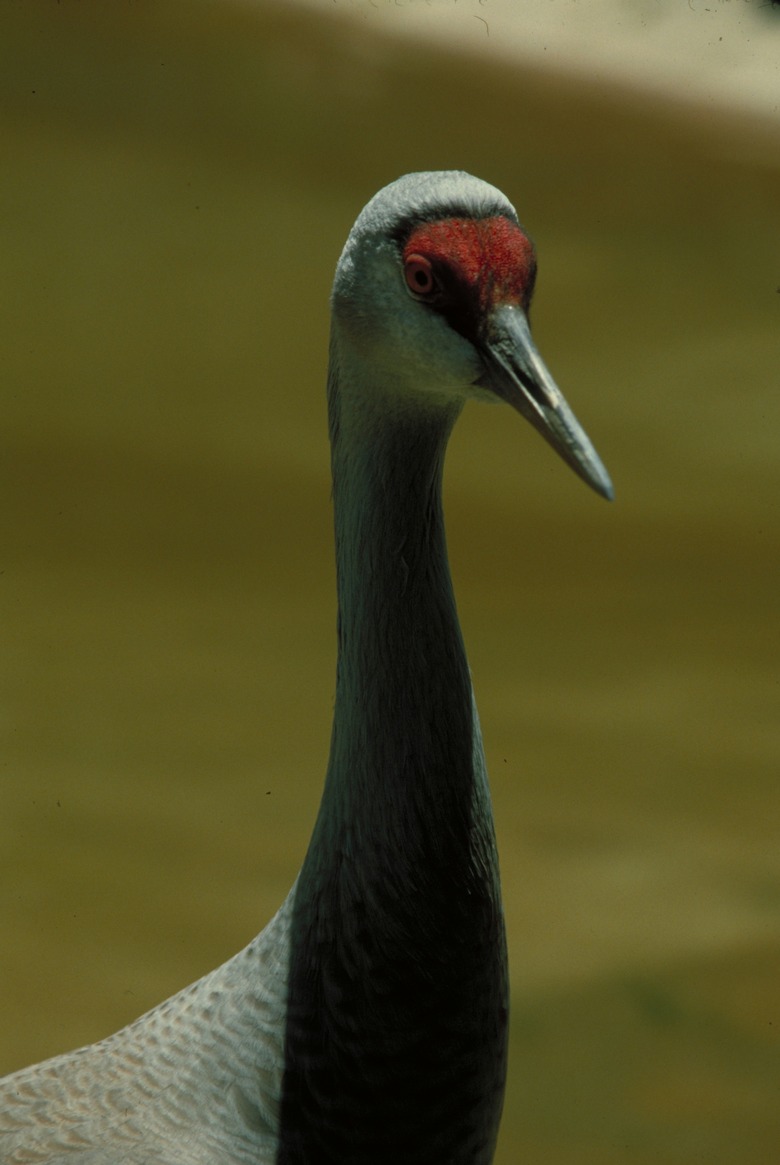How To Tell Gender Difference In Sandhill Cranes
The sandhill crane (sometimes called the sand crane) is a species of crane that can be found in various regions of North America, frequenting grasslands, slow rivers, meadows and shallow freshwater marshes. Visually distinguished from the red-crowned crane (found in China and Japan) by the way their tail feathers droop to form a curved bustle, these cranes are a celebrated sight by birdwatchers. Determining the gender or sex of a sandhill crane is difficult – but possible, if you have the right information.
TL;DR (Too Long; Didn't Read)
**TL;DR (Too Long; Didn't Read)**
Sandhill cranes, like all crane birds, are monomorphic – meaning that males and females of the species have no immediate visual differences. As a result, it can be difficult for a birdwatcher or zoologist to determine the sex of a sandhill crane from afar, without first observing the crane's behavior: one method of sexing the birds involves watching and listening to them during their unison call – the male sandhill crane will point his head up to call out, while the female responds to male cries with two notes rather than one.
Crane Bird Sexing
Crane Bird Sexing
Cranes of all species are monomorphic birds. In other words, the male sandhill crane and the female sandhill crane share all of their visual characteristics. Male cranes may be slightly larger, but this is not always the case. As such, identifying the sex or gender of these birds – a process known as sexing – is difficult, and often requires either close physical examination of the bird or the testing of the bird's excrement or blood. However, over the years we have identified methods to distinguish male and female sandhill cranes, when observed over a period of time.
Sandhill Crane Differences
Sandhill Crane
Differences
When observed visually and audibly, some differences between male and female cranes can be found. While the sandhill crane female is just as aggressive as the male, and the cranes are monogamous in general, meaning that the male will not attempt to mate with multiple partners, the cranes' unison call – the cries made by two cranes just before flight, or to tell other pairs of cranes that the territory is occupied – can be used to easily distinguish between the male and female of the species. During the call, the male crane will point his neck up to the sky, and for every singular cry the male utters, the female crane will respond with two notes. Though it isn't the most convenient manner of determining the sex of sandhill cranes, it at least provides an option.
Cite This Article
MLA
Flournoy, Blake. "How To Tell Gender Difference In Sandhill Cranes" sciencing.com, https://www.sciencing.com/tell-gender-difference-sandhill-cranes-8706676/. 25 July 2018.
APA
Flournoy, Blake. (2018, July 25). How To Tell Gender Difference In Sandhill Cranes. sciencing.com. Retrieved from https://www.sciencing.com/tell-gender-difference-sandhill-cranes-8706676/
Chicago
Flournoy, Blake. How To Tell Gender Difference In Sandhill Cranes last modified March 24, 2022. https://www.sciencing.com/tell-gender-difference-sandhill-cranes-8706676/
